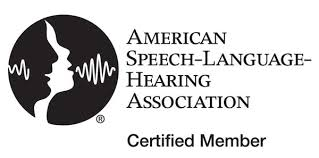When Someone Stutters, What Can I Do About It?
What Does It Affect?
Many people have functional lives and successful careers despite their disfluency (more below).
Pop Quiz! Which of the following famous people stutter(ed)?
Was it...
A. Marilyn Monroe - Actress, overall beauty
B. James Earl Jones - Actor, voice of Darth Vader
C. Julia Roberts - Actress
D. Bruce Willis - Actor
E. Tiger Woods - Pro golfer
F. Winston Churchill - Statesman, Orator
Or...
G. Kenyon Martin - NBA player
Explore Our Goal Achieving, Client Centered Products
O.k. I know the suspense is killing you.
Answer: All of them! See how much smarter we're making you?
(see more at the Stuttering Foundation)
If that's not enough proof that you can stutter and still be successful...
...I don't know what is.
That being said, this disorder can have a huge impact on a person’s self esteem and confidence.
If left untreated, it can be very detrimental, affect a person’s life choices and stop them from reaching their full potential.
People with this disorder often have:
- Negative attitudes toward speaking
- Anxiety, are nervous about talking
- Guilt, shame, fear, embarrassment, and frustration
These feelings can range from being very mild and hardly impacting a person’s life to very severe and preventing the person with the disorder from functioning socially at all.
The negative feelings and attitudes can prevent a person with this disorder from doing everyday things such as ordering food at a restaurant, speaking on the phone, or even speaking at all.
Negative feelings and attitudes come from:
- Feeling out of control
- Concern and anxiety of parents
- Teasing and rejection by other children
And these can:
- Make stuttering worse and more often
- Cause secondary/escape behaviors
- Cause avoidance behaviors
- Make a person not willing to risk change
- Make it harder for therapy success or improvements to “stick”
Treating negative feelings and attitudes that accompany this disorder is a very important focus in therapy.
These negative feelings can either make stuttering therapy harder because it requires the person to face and overcome them, or they can make it more successful because they empower and motivate the person to overcome the disorder.
Bottom line: They need to be treated and handled carefully.
Teasing is a huge problem for children with this disorder and must be dealt with by parents, teachers, Speech Pathologists, and the child.
An SLP is trained to help deal with teasing and we have some information here as well.
Other’s reactions to this disorder are a big problem as well. Often people don’t know how to react. They are awkwardly caught off guard, or they can’t wait for the person to finish what they are saying
During Graduate School, one of my favorite professors, Anne Elsweiler, CCC-SLP who taught my Fluency class, gave us an assignment to get stuck on purpose.
We were to do this while talking to 10 different strangers in different locations. Then we wrote our experiences about how others reacted.
My experience...
Some people didn’t react at all, but others wouldn’t make eye contact with me, one girl even let out a little laugh, and a server at a restaurant even asked me if I was okay after I stuttered.
I hated their reactions.
I became really self-conscious and nervous about talking to the next person. If you ever want to feel what it is like to have this disorder, try doing it on purpose.
It helped me see, to a small degree, what a person with this disorder has to deal with...
...every day.
Time Pressure is also one of the worst things for people with this disorder and it is getting worse.
Today’s world is very fast-paced and people are always trying to do things as quick as possible. This time pressure is very common in our communication.
When we talk to others and they don’t answer fast enough, we get impatient and start talking again or we assume the other person didn’t hear or understand us.
People with this disorder feel this pressure to respond, plus they are stressed because they know that if they pause, they might have trouble getting started again.
To understand what this feels like, try this little experiment of resisting time pressure.
The next time you start a conversation with someone...
...count silently to 2 before responding to them.
Make sure you keep eye contact with the other person while waiting the 2 seconds and see what happens. Professor Elsweiler from Grad School also had us try this.
And if you think that is difficult...
...try it on the phone.
None of us will ever fully understand what it is like to have this disorder (unless you have it), but it is important to remember that it affects people in many complex ways.
That’s why being understanding, patient, and getting treatment are all very important.
SEE ALSO: The Best Free App for Speech Therapy
What Does an SLP Do to Help?
Speech-Language Pathologists (SLPs), first of all, test to see if it is really the actual disorder or normal disfluency like we all have.
The criteria they consider is listed here.
They use a variety of standardized and non-standardized tests, parent and teacher interviews, and observe conversations in different environments to make their assessment.
SLPs evaluate the child on multiple levels.
From language to articulation skills, to hearing ability, as well as negative feelings and attitudes about their speech.
If the disorder is found, the SLP determines what level it is (borderline, beginning, intermediate, advanced) and how severe it is (mild, moderate, severe).
The SLP will most likely try some quick therapy techniques to see if a certain method makes a difference and which one will most likely help the most.
After gathering all the information, they will make recommendations for therapy if needed and what kinds of things should be changed in the environment at home and school, etc.
SLPs make goals and provide fluency therapy for people with this disorder using 2 different approaches.
They should also be able to determine the prognosis (likelihood of recovery or improvement) based on what they find during testing. There are certain indicators that SLPs use for good recovery or a "positive prognosis".
What Can I Do About It?
Do you want to know what you can do RIGHT NOW to help your child stutter less?
- Read about how to react when someone gets stuck
If you know your child has this disorder, you can check into the very successful Lidcombe Program if you want to do a structured home therapy program led by an SLP but carried out by a parent.
I recommend learning all you can about this disorder because it is very complex and emotionally challenging.
The more you learn about it the more you can do about it.
…but overall, please contact an SLP as soon as possible.
SLPs are the experts in this area and they want to help in every way they can.
They will even train you on what you can do at home if therapy is not quite needed or if you can’t afford it.
This is because, like all other areas in communication, but especially with this disorder, the sooner you get help, the better!
Children are much more likely to recover from this disorder the sooner they get therapy.
SEE ALSO: The Best Books for Speech Therapy Practice
Resources We Like
The Stuttering Foundation of America - Largest non-profit organization for this disorder, affordable books and videos for therapists, parents, and people with this disorder. (visit site)
MNSU Stuttering Homepage - lots of information on stuttering, including "Especially for Teadhers", "Especially for Parents", "Kids who Stutter", "Dealing with Teasing", "How to give a classroom presentation" and more. (visit site)
National Stuttering Association - find support groups across the U.S. and newsletters for adults and children. Their focus is on self-help for people with this disorder. (visit site)
The Association of Young People who Stutter - If you have this disorder...you have Friends. Find a network of support for kids, families, and professionals here. (visit site)
American Speech Language Hearing Association - professional association for Speech-Language Pathologists, that gives general information for the public about this disorder. (visit site)
Specialty Board on Fluency Disorders - for SLPs who want to specialize in fluency disorders. (visit site)
British Stammering Association (visit site)
International Stuttering Association (visit site)
StutteringRecovery.com (visit site)
Activities and Product Discounts, Oh My!
Sign up for Terrific Therapy Emails
Your information is 100% private & never shared.



























